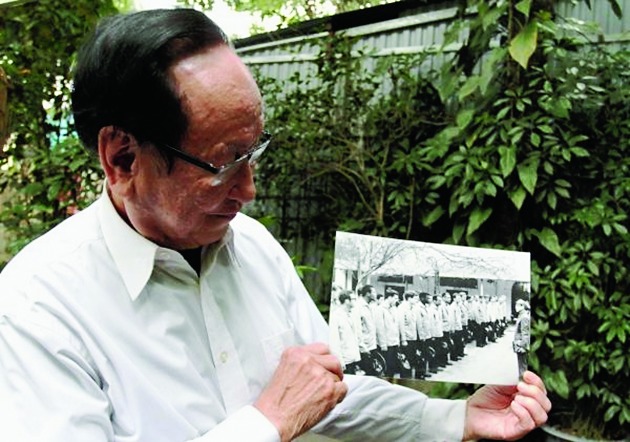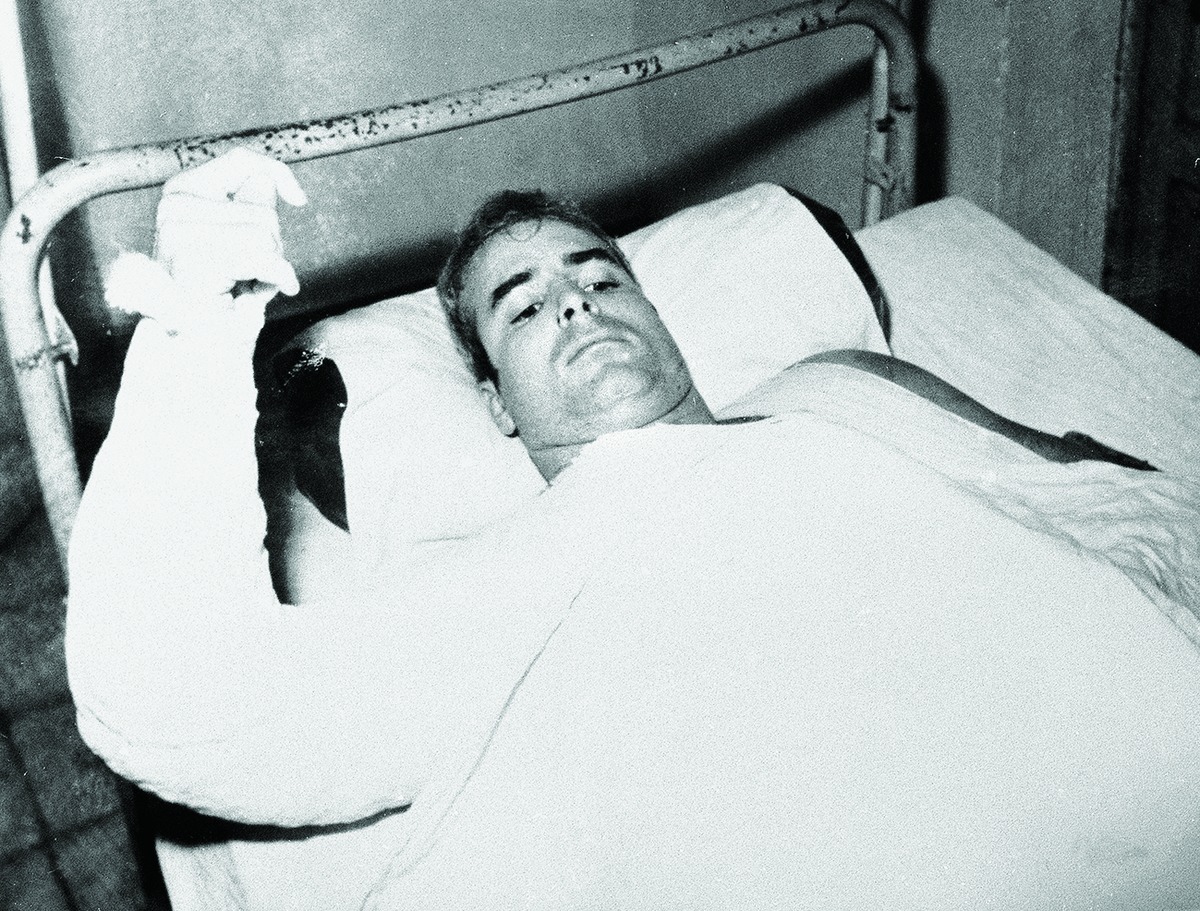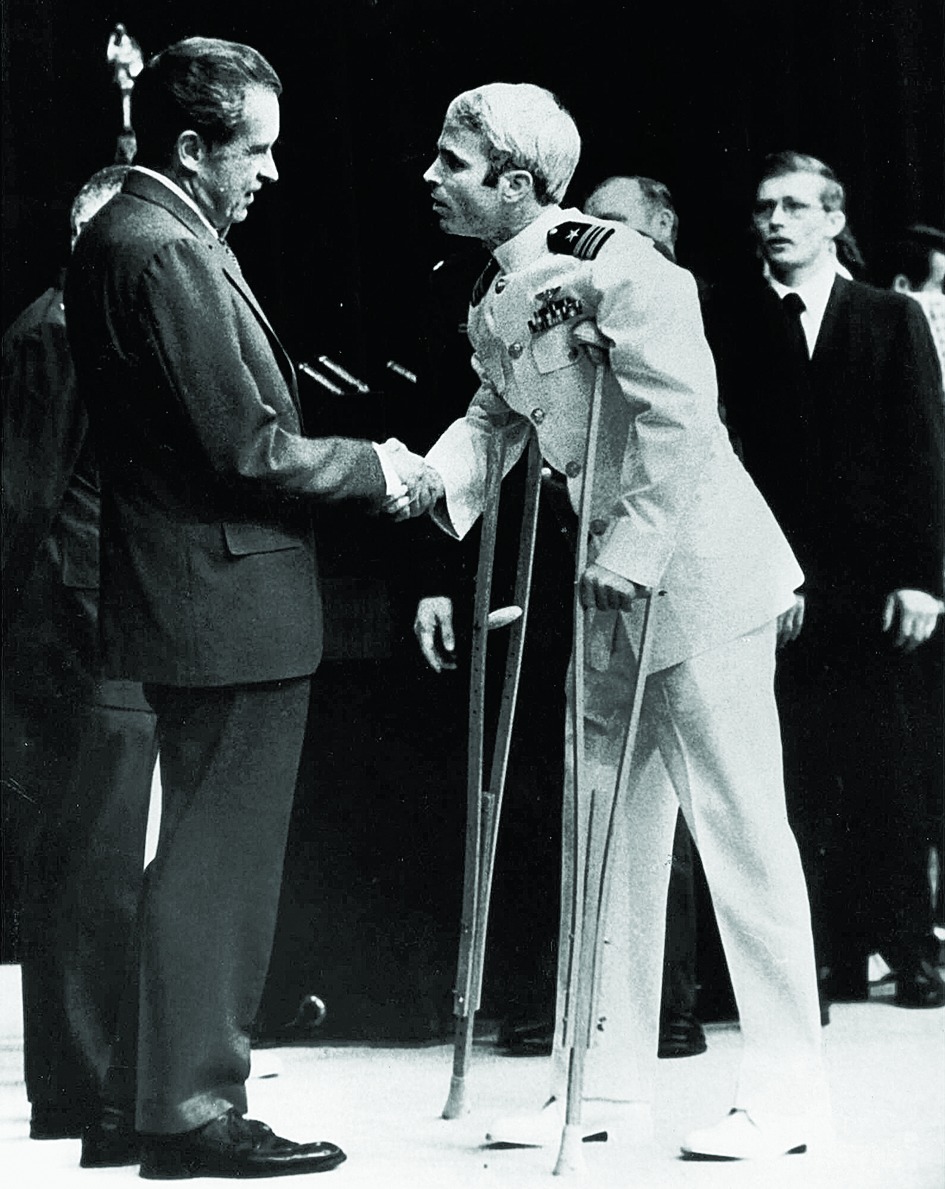On the shores of a still and peaceful lake on the edge of downtown Hanoi, the inscription on a faded monument stands as a reminder of a violent event 51 years ago.
'On Oct 26, 1967, at Truc Bach Lake, the military and people of Hanoi arrested Major John Sidney McCain, a pilot of the American Navy's air force,' it says on the sculpture, which depicts an airman with his hands above his head in front of a broken plane wing.
The naval aviator was flying one of 10 planes that were shot down by the North Vietnamese military on the same day, according to the inscription on the statue, which McCain himself visited on a return to Vietnam in 2009.
'I felt compelled to come out here and bring some flowers,' said Robert Gibb, an American in Hanoi who placed a bouquet of yellow chrysanthemums at the foot of the monument after hearing the news of McCain's death on Sunday morning.
Gibb was one of several U.S. citizens living in the Vietnamese capital to visit the monument with tributes. Most brought flowers. One man offered a folded US flag.
'He was the last guy I ever voted for President,' said Gibb. 'The moment he dropped in here changed his life forever.'
McCain was dragged out of Truc Bach lake and spent the next five-and-a-half years as a high-profile prisoner of war in Hoa Lo prison -- the infamous 'Hanoi Hilton' --- where he said he and others were tortured.
A statue marking the spot by the lake was erected in 1967, and renovated in the 1980s and 1990s.
The monument is easy to miss -- the tree-lined street it stands on is now a popular tourist destination, dotted with cafes, ice cream parlours and vendors selling cotton candy from the back of bicycles.

Tran Trong Duyet, the former director at the Hoa Lo prison in Hanoi that was dubbed the “Hanoi Hilton” and where McCain was held, holds on January 3, this year, a photo of himself with US prisoners of war at the jail. AFP
The US embassy in Hanoi said on Sunday it planned to launch a fellowship to support a 'young Vietnamese leader committed to public service' to travel to the US on a study tour annually.
The programme will be named the 'McCain/Kerry Fellowship' in honour of McCain and John Kerry, another Vietnam War veteran who has promoted US-Vietnam issues during his political career, the embassy said in a statement.
Le Ma Luong, the former director of the Vietnam Military History Museum in Hanoi who met McCain soon after 2010, told Reuters he remembered the late senator as an articulate and professional man who contributed greatly to building relations with Vietnam.
Luong said he felt sorry that in return Vietnam had been unable to locate the ring McCain was wearing on the day he was dragged out of the lake.
'That was the ring his wife gave him and it went missing after he was shot down and rescued. We have tried our best to find it but in vain,' said Luong. 'Anyone who lost a ring from their beloved would be devastated by it, not just him'.
'His contribution to the Vietnam-US relationship will be remembered.'
New York Times News Service and Reuters

An undated picture shows McCain lying injured in North Vietnam. AP
A son and grandson of four-star admirals who were his larger-than-life heroes, John McCain carried his renowned name into battle and into political fights for more than a half-century. It was an odyssey driven by raw ambition, the conservative instincts of a shrewd military man, a rebelliousness evident since childhood and a temper that sometimes bordered on explosiveness.
Nowhere were those traits more manifest than in Vietnam, where he was captured and stripped of all but his character.
He boiled over in foul curses at his captors. Because his father was the commander of all American forces in the Pacific during most of his five and a half years of captivity, McCain, a Navy lieutenant commander, became the most famous prisoner of the war, a victim of horrendous torture and a tool of enemy propagandists. Vietnam says the American prisoners were treated well.
Shot down over Hanoi, suffering broken arms and a shattered leg, McCain was subjected to solitary confinement for two years and beaten frequently. Often he was suspended by ropes lashing his arms behind him. He attempted suicide twice. His weight fell to 105 pounds. He rejected early release to keep his honour and to avoid an enemy propaganda coup or risk demoralising his fellow prisoners.
He finally cracked under torture and signed a 'confession.' No one believed it, although he felt the burden of betraying his country. To millions of Americans, McCain was the embodiment of courage: a war hero who came home on crutches, psychologically scarred and broken in body, but not in spirit. He underwent long medical treatments and rehabilitation, but was left permanently disabled, unable to raise his arms over his head. Someone had to comb his hair.










